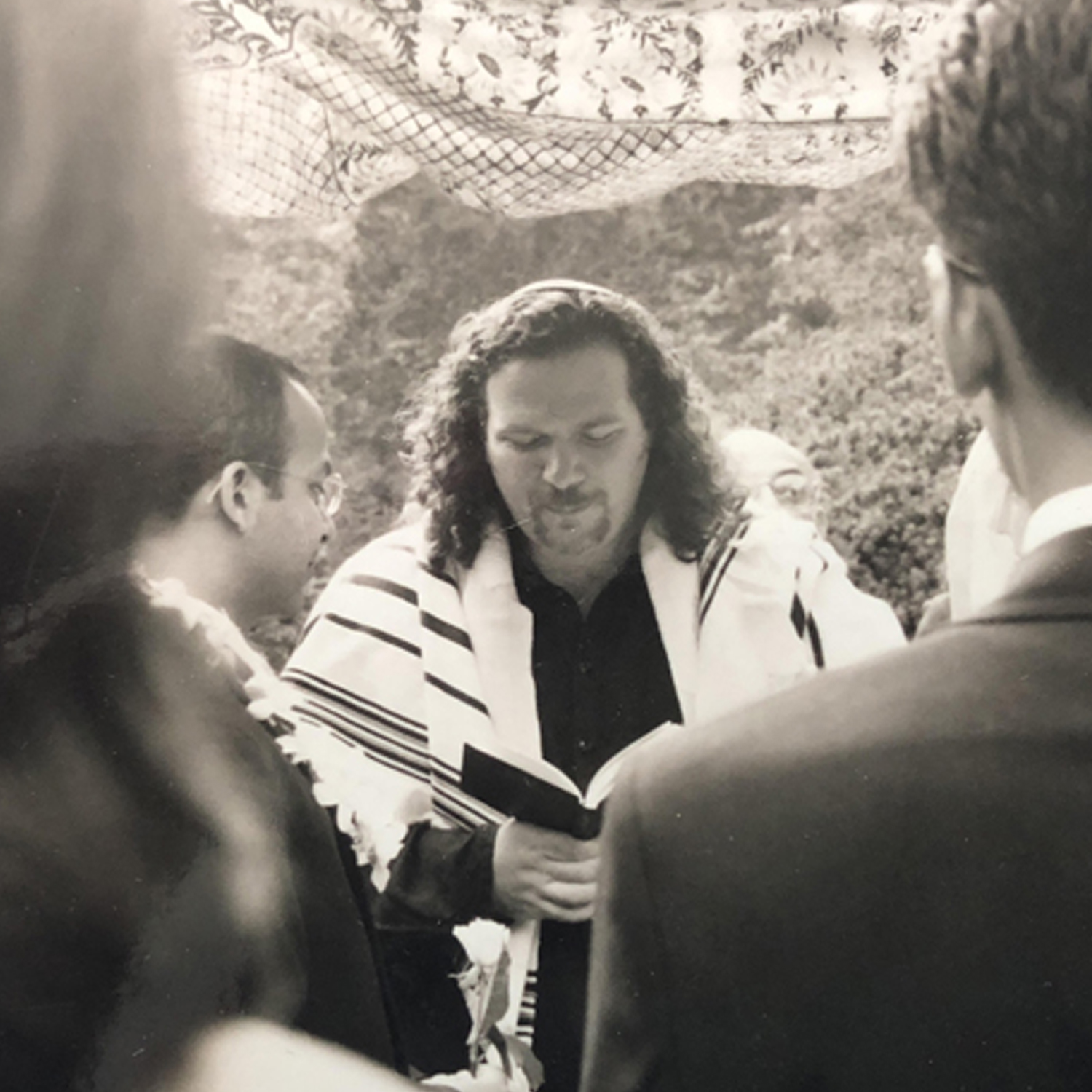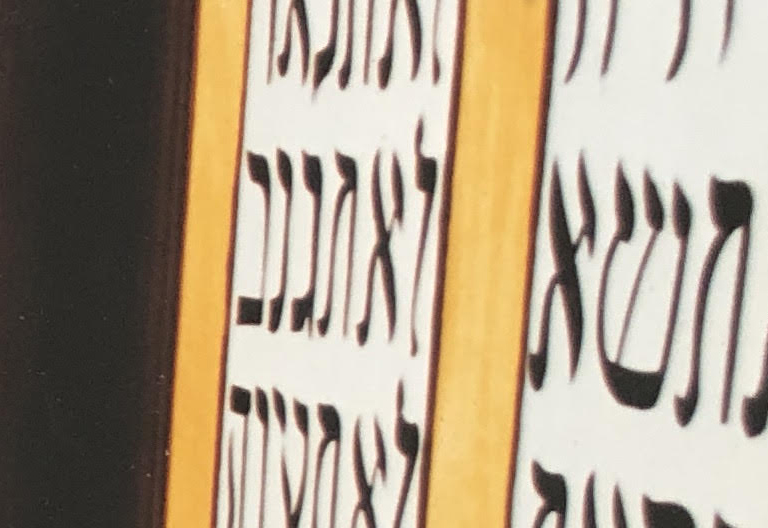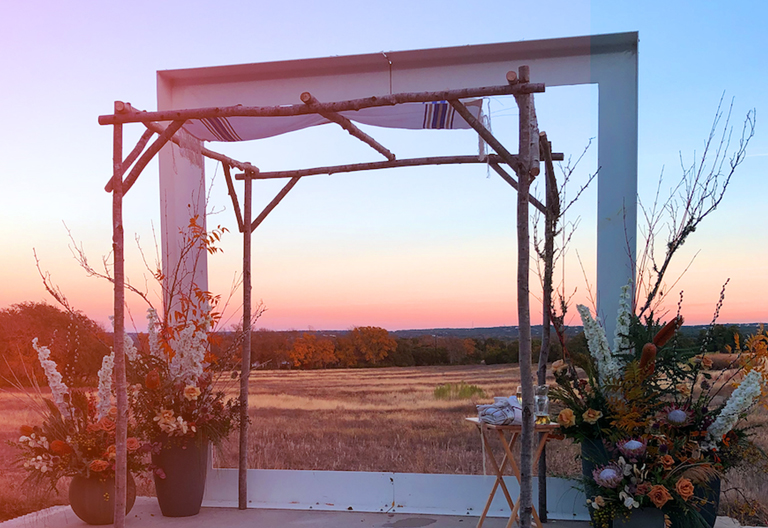A Wedding Filled with Keva and Kavanna
In the past eleven years I have participated in over 150 interfaith-Jewish weddings and commitment ceremonies. And while each is unique and created around the couple and their wishes and circumstances, there is a ritual formula that underlies each of these ceremonies. The couple could be Buddhist-Jewish, Christian-Jewish, Hindu-Jewish, Secular Humanist-Jewish, Orthodox Christian-Jewish, Native American-Jewish, Zoroastrian-Jewish, or any other flavors you can imagine. The Jewish partner also varies greatly in his or her connection to Jewish life, community, and stream of Judaism.
In all streams of Jewish tradition there are two parts to ritual, “keva” and “kavanna.” Keva is the structured ritual that underlies the ceremony and kavanna is the intention and focus that is brought to that structure. Here, I am going to speak about the underlying ritual available to couples preparing for an interfaith-Jewish wedding and commitment ceremony with a little introduction to the intention and focus. It is my family history, personal learning, and commitment to Jewish life that guides me to say that all Jewish ritual around this life-cycle ceremony is not only available for all interfaith couples, but also offers a great spiritual foundation for a couple’s journey through life.
Keva is the structured ritual that underlies the ceremony and kavanna is the intention and focus that is brought to that structure.
The elements of an interfaith-Jewish ceremony which are most important are inclusion and balance. In other words, all of the gathered guests and participants should feel connected to the ritual and understand themselves as included in its meaning and use. Prayers should be inclusive and unifying rather than exclusive and separating. Family and friends, of each member of the couple, should be included in the ceremony with respect and honor regardless of his or her religious affiliation. Most importantly, the couple should recognize all of the ritual offered as speaking to each of them and it should be used in such a way as to strengthen their unification as a new family. Whether officiated by a rabbi, cantor, Jewish justice of the peace, or invested friend, or co-officiated with a spiritual leader of another tradition, the ceremony can have a graceful and joyful flow that meets all of these criteria.
As for the rituals themselves, there is ketubah (the wedding contract, versions of which are available for interfaith couples), bedekin (a brief pre-wedding ceremony to introduce the couple to each other in a spiritual way), chuppah (the ceremony under a canopy), yichud (a private moment of togetherness for the couple after the chuppah), and a festive meal with blessings over wine and bread.
Ketubah is a document easily found on the Internet or in a Judaica shop. It is a piece of art with vow text in the center and a place for the couple and witnesses to sign. It is usually signed during the bedekin about a half hour before the chuppah. The bedekin ceremony usually includes the couple, their immediate family, wedding party, important guests like grandparents or other very close friends, and two witnesses who will sign the ketubah. This part of the ceremony is brief and includes blessings of welcome for the couple and signing of the ketubah. It plays an important role in making a spiritual transition from the logistics of getting prepared for the ceremony and the ceremony itself. At the end of this piece, the processional is organized and the others are shown to their seats.
The couple is then escorted to the chuppah. There are many ways to get down the isle. The most frequently used method is men first, single file, with the groom and parents last, followed by the women, single file, followed by the bride and her parents. Two pieces of music alert the guests of their arrival, one for the wedding party and a separate piece for the bride. The congregation is asked to rise for the bride. Upon arrival, the couple begins a circling ritual. Traditionally the bride circles the groom seven times. In most weddings I participate in, each circles the other three times and the final circle is made by the couple together. The music stops, the couple comes under the canopy and the guests are seated. Under the chuppah stand the couple and the officiants. The parents and wedding party are around the chuppah on its outside signifying a new family unit is being created with the support from others all around. The chuppah may be held or free standing according to the couple’s wishes and design.
The ceremony under the chuppah is fairly simple. We begin with a welcome to the couple and the guests. Opening blessings, including wine, the special nature of the day, and blessings for the home are appropriate. A blessing for family and friends who have died may also be included. These opening blessings are usually followed by the reading of the ketubah and its explanation. The ketubah reading includes a statement of vows which can range from a traditional Jewish set, including the value of the bride’s dowry and her responsibility to make a good home and raise a family and the groom’s responsibility to earn a living, to an egalitarian statement of care and respect. Even with the wide range of ketubah language now available, many couples also choose to create or answer to other vows that ring in the ears of the public with an “I do.” After the ketubah and vows, a couple exchanges rings with words of love and commitment. The rings are followed by blessings and readings offered by chosen guests. In Jewish tradition there are usually seven blessings, representing the seven days in the creation story in the Bible. Couples often choose the readings to be read by others, and a traditional formula exists for those who are interested. Then we have a silent meditation to allow for guests to bless the couple in their hearts, a closing benediction or blessing, and the smashing of glass.
The glass can signify many meanings and any rabbi worth her or his weight has more than a handful at their disposal. One of my favorite interpretations has to do with the creation of the world and its shattering. Our job as human beings is to find the broken pieces and gather them with others to rebuild the “Eden” we dream of. A broken glass reminds couples not to hold their love in an ivory tower but to use their relationship to strengthen each other as they go into the world to pick up some of the pieces. In this way, marriage can help to better the world.
After the ceremony, the couple leaves with music playing and enters a private space for yichud. There they spend a few minutes celebrating as a newly married couple. Then, when they reenter the party, they can devote their time to each other and their guests having first tended to each other. It is a good thing to have some water and food in this private room since most of the next hour is about talking and greeting and hugging and may not provide needed nourishment for the couple. At the meal, parents or friends offer meal blessings acknowledging the value of such a celebration.
In any Jewish or interfaith-Jewish wedding, there is room for other participants who read or sing or play music for the couple. Biblical scripture is a welcomed source of such poetry and inspiration. There is also room for other traditions such as candles for spirit, spices to wake the senses, and chants to open the mind and heart. Remember, however, that the more you add, the longer the ceremony. Generally, a full ceremony is forty-five minutes to an hour, with room for shortening or lengthening.
Finally, the traditions and rituals and words and melodies are there to celebrate the couple while honoring their family and guests. The focus is on unity and oneness within the context of many different understandings of that oneness. And, may your simcha (joyful occasion) be one that inspires you and all those who are witness to it, and may your life be filled with mazel tov (good wishes and luck).






